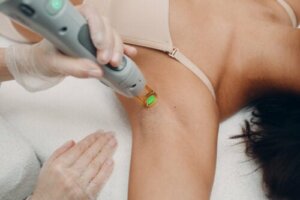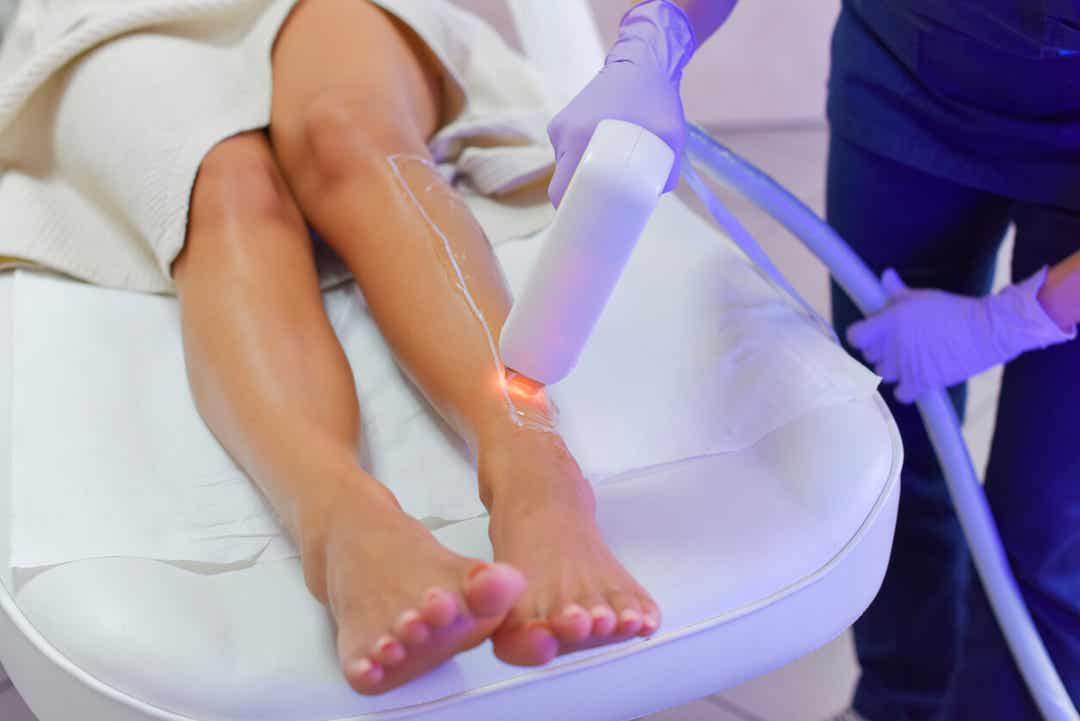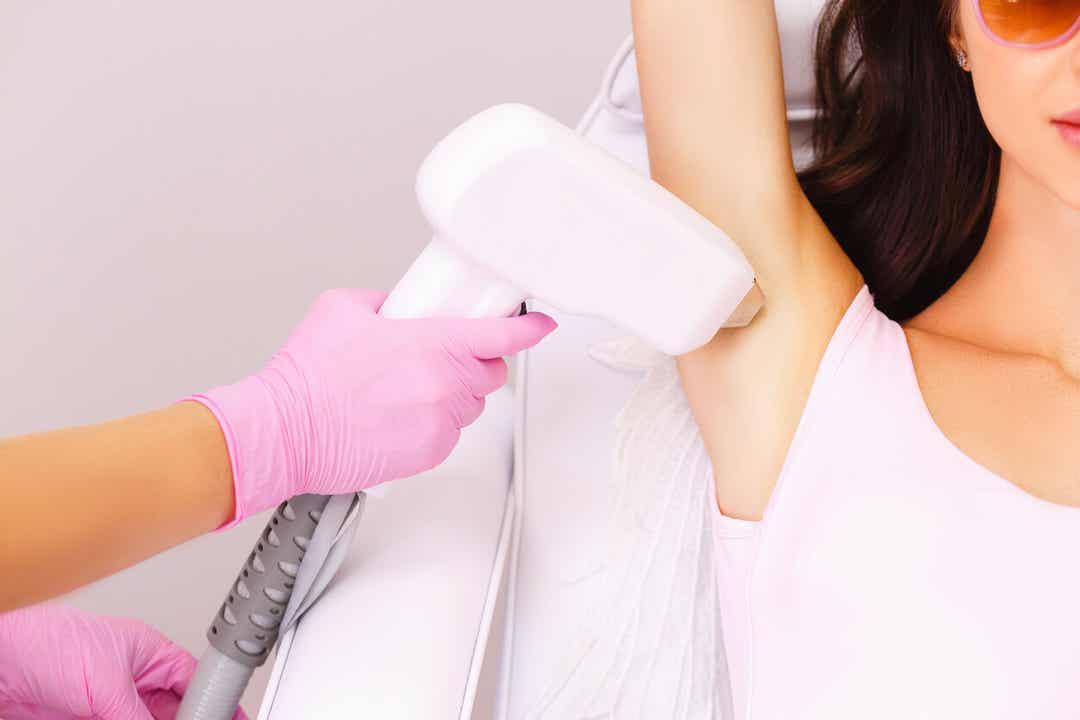Laser Hair Removal for Teenagers: What You Need to Know


Written and verified by the dermatologist Maria del Carmen Hernandez
There’s currently a great demand for safe, long-lasting, and effective hair reduction through laser hair removal for teenagers. That being said, the laser is the best option to reduce hair on the body in the long term, which is one of the great annoyances of youth. That’s why we want to talk to you about laser hair removal for teenagers.
Skin types according to Fitzpatrick
First, let’s take a look at the Fitzpatrick skin types. Skin phototypes were constructed based on an individual’s skin color and their tendency to burn or tan when exposed to sunlight.
- I- Pale white skin, blue/green eyes, blond/red hair: this is the skin type that easily turns red and doesn’t tan.
- II- Fair skin, blue eyes: burns easily, tans poorly.
- III- Darker white skin: tans after the initial burn.
- IV- Light brown skin: burns minimally, tans easily.
- V- Brown skin: rarely burns, tans easily.
- VI- Brown or black skin: never burns, always tans.

Pre-session laser hair removal preparations
Once you’ve decided to begin laser hair removal treatment, you should avoid any method that involves pulling out the hair follicle. That is, in all sessions, the same hair follicle should be worked on by applying heat.
It’s best to attend the sessions with clean skin, without applying creams, perfumes, or any product that could interfere with the procedure.
When it comes to laser hair removal in teenagers, it’s customary to wait until the age of 16 to perform this type of procedure, or after the first menstrual period has passed, so that the hormonal axis is already mature.
Read also: 10 Effective Skincare Tips for Teenagers
Varieties of laser equipment to choose from depending on the type of skin
While there’s always one that prevails over the rest, there are several lasers that perform the function of laser hair removal in teenagers. Some of them are the following, according to their effectiveness based on hair and skin:
- Ruby laser: this is most effective for lighter skin types with dark hair (skin types I-III).
- Alexandrite: the Alexandrite laser’s best for lighter hair (skin types I-III).
- Diode laser: this option offers less damage to the skin surface, it’s safer for darker skin (skin types IV).
- Nd-YAG: this last option has less melanin absorption (skin types I-IV).
Post-session advice regarding laser hair removal for teenagers
It should be noted that lasers can remove hair, but the treatment doesn’t provide a permanent answer to hair growth. Once the entire treatment is complete, patients may need maintenance sessions once every six to twelve months, as some small hairs may grow back.
Laser treatments predispose the skin to increased sensitivity, making it vulnerable to external agents. Therefore, the American Academy of Dermatology recommends the use of sunscreen greater than factor 50 with renewal after two hours, or direct avoidance of ultraviolet rays.
Likely adverse effects
Common adverse effects of laser hair removal include erythema, burning, and pain after treatment. More serious adverse effects include:
- Blistering
- Crusting
- Purpura
- Depigmentation
- Scarring
Most of the complications are preventable by taking the correct precautions with fluence setting, spot size, wavelength, and the adequate cooling of the device.
Therefore, it’s important that the operating personnel be trained and have in-depth knowledge of the techniques, complications, or mechanisms of this type of practice.
You may be interested in: Hair Removal During Pregnancy: Effective Methods

Factors that affect the result
Several sessions are necessary to treat all hair follicles at the appropriate growth stage. In most cases, four to six sessions spaced four to six weeks apart are required. There are various factors that affect the results, such as:
- The location of the hair (armpits and pubic area are the most responsive areas).
- The type of laser used.
- The hormonal status, because high levels stimulate hair growth.
- The stage of hair growth (it responds much better in the anagen phase).
- Skin color and hair color (light skin and dark hair get the best results).
- The treatment plan and the operator.
Laser hair removal for teenagers and its effectiveness
Although there’s a great deal of scientific evidence regarding the effectiveness of laser hair removal for teenagers, one of the great pillars for obtaining effective results is the choice of the personnel who perform it.
According to each country, the personnel who are certified to use lasers and perform this function will vary. Therefore, the corresponding certificates must be requested to guarantee a correctly performed procedure.
There’s currently a great demand for safe, long-lasting, and effective hair reduction through laser hair removal for teenagers. That being said, the laser is the best option to reduce hair on the body in the long term, which is one of the great annoyances of youth. That’s why we want to talk to you about laser hair removal for teenagers.
Skin types according to Fitzpatrick
First, let’s take a look at the Fitzpatrick skin types. Skin phototypes were constructed based on an individual’s skin color and their tendency to burn or tan when exposed to sunlight.
- I- Pale white skin, blue/green eyes, blond/red hair: this is the skin type that easily turns red and doesn’t tan.
- II- Fair skin, blue eyes: burns easily, tans poorly.
- III- Darker white skin: tans after the initial burn.
- IV- Light brown skin: burns minimally, tans easily.
- V- Brown skin: rarely burns, tans easily.
- VI- Brown or black skin: never burns, always tans.

Pre-session laser hair removal preparations
Once you’ve decided to begin laser hair removal treatment, you should avoid any method that involves pulling out the hair follicle. That is, in all sessions, the same hair follicle should be worked on by applying heat.
It’s best to attend the sessions with clean skin, without applying creams, perfumes, or any product that could interfere with the procedure.
When it comes to laser hair removal in teenagers, it’s customary to wait until the age of 16 to perform this type of procedure, or after the first menstrual period has passed, so that the hormonal axis is already mature.
Read also: 10 Effective Skincare Tips for Teenagers
Varieties of laser equipment to choose from depending on the type of skin
While there’s always one that prevails over the rest, there are several lasers that perform the function of laser hair removal in teenagers. Some of them are the following, according to their effectiveness based on hair and skin:
- Ruby laser: this is most effective for lighter skin types with dark hair (skin types I-III).
- Alexandrite: the Alexandrite laser’s best for lighter hair (skin types I-III).
- Diode laser: this option offers less damage to the skin surface, it’s safer for darker skin (skin types IV).
- Nd-YAG: this last option has less melanin absorption (skin types I-IV).
Post-session advice regarding laser hair removal for teenagers
It should be noted that lasers can remove hair, but the treatment doesn’t provide a permanent answer to hair growth. Once the entire treatment is complete, patients may need maintenance sessions once every six to twelve months, as some small hairs may grow back.
Laser treatments predispose the skin to increased sensitivity, making it vulnerable to external agents. Therefore, the American Academy of Dermatology recommends the use of sunscreen greater than factor 50 with renewal after two hours, or direct avoidance of ultraviolet rays.
Likely adverse effects
Common adverse effects of laser hair removal include erythema, burning, and pain after treatment. More serious adverse effects include:
- Blistering
- Crusting
- Purpura
- Depigmentation
- Scarring
Most of the complications are preventable by taking the correct precautions with fluence setting, spot size, wavelength, and the adequate cooling of the device.
Therefore, it’s important that the operating personnel be trained and have in-depth knowledge of the techniques, complications, or mechanisms of this type of practice.
You may be interested in: Hair Removal During Pregnancy: Effective Methods

Factors that affect the result
Several sessions are necessary to treat all hair follicles at the appropriate growth stage. In most cases, four to six sessions spaced four to six weeks apart are required. There are various factors that affect the results, such as:
- The location of the hair (armpits and pubic area are the most responsive areas).
- The type of laser used.
- The hormonal status, because high levels stimulate hair growth.
- The stage of hair growth (it responds much better in the anagen phase).
- Skin color and hair color (light skin and dark hair get the best results).
- The treatment plan and the operator.
Laser hair removal for teenagers and its effectiveness
Although there’s a great deal of scientific evidence regarding the effectiveness of laser hair removal for teenagers, one of the great pillars for obtaining effective results is the choice of the personnel who perform it.
According to each country, the personnel who are certified to use lasers and perform this function will vary. Therefore, the corresponding certificates must be requested to guarantee a correctly performed procedure.
All cited sources were thoroughly reviewed by our team to ensure their quality, reliability, currency, and validity. The bibliography of this article was considered reliable and of academic or scientific accuracy.
- Fitzpatrick TB. The validity and practicality of sun-reactive skin types I through VI. Arch Dermatol. 1988 Jun;124(6):869-71. https://pubmed.ncbi.nlm.nih.gov/3377516/
- McBurney EI. Side effects and complications of laser therapy. Dermatol Clin. 2002 Jan;20(1):165-76. https://pubmed.ncbi.nlm.nih.gov/11859590/
- Russe E, Purschke M, Herold M, Sakamoto FH, Wechselberger G, Russe-Wilflingseder K. Evaluation of Safety and Efficacy of Laser Hair Removal With the Long-Pulsed 755 nm Wavelength Laser: A Two-Center Study With 948 Patients. Lasers Surg Med. 2020 Jan;52(1):77-83. https://pubmed.ncbi.nlm.nih.gov/31579971/
- Thomas MM, Houreld NN. The “in’s and outs” of laser hair removal: a mini review. J Cosmet Laser Ther. 2019;21(6):316-322. https://pubmed.ncbi.nlm.nih.gov/31018716/
- AAD staff. (n.d.). Laser hair removal: FAQs. American Academy of Dermatology Association. https://www.aad.org/public/cosmetic/hair-removal/laser-hair-removal-faqs
This text is provided for informational purposes only and does not replace consultation with a professional. If in doubt, consult your specialist.








